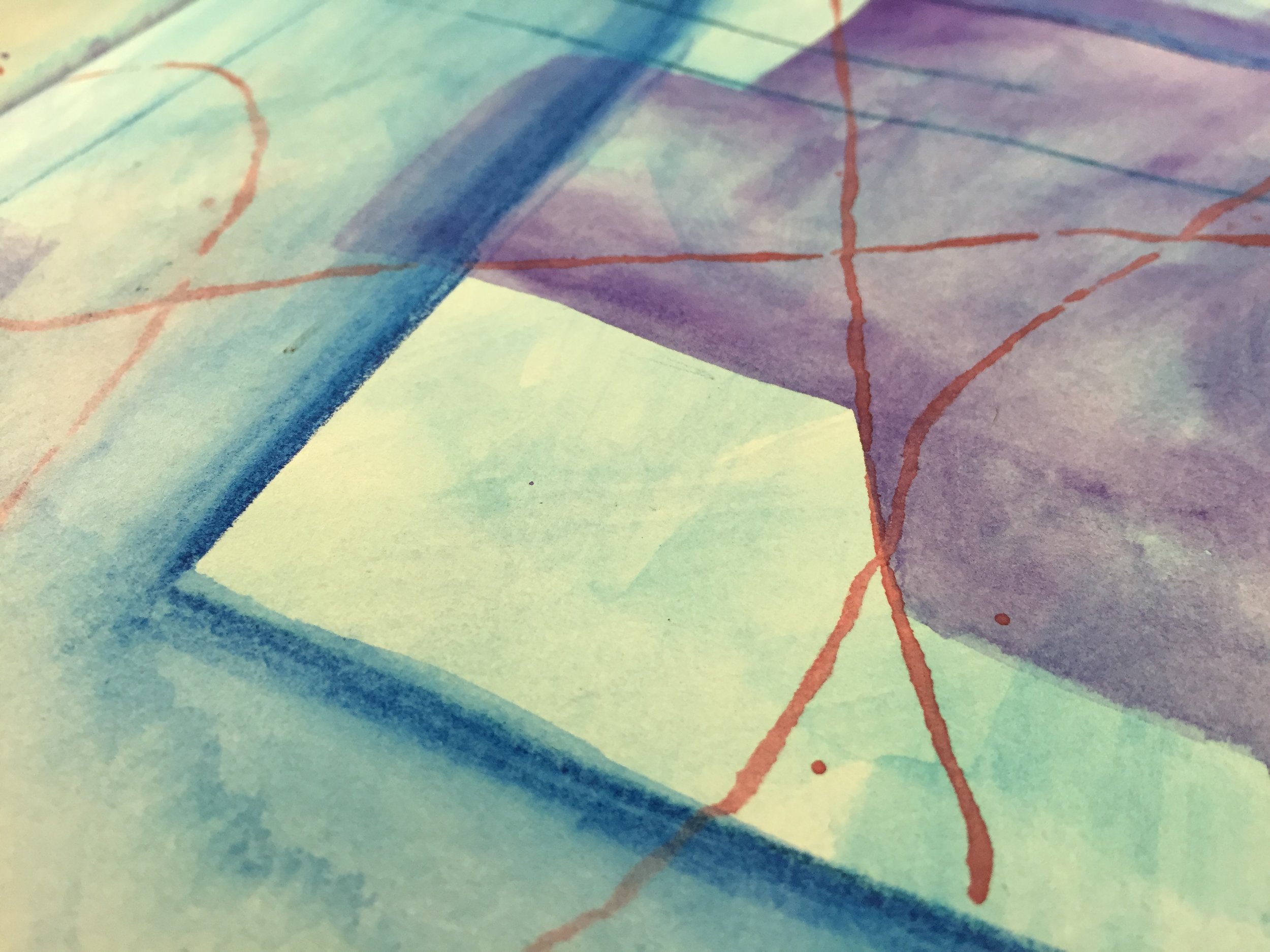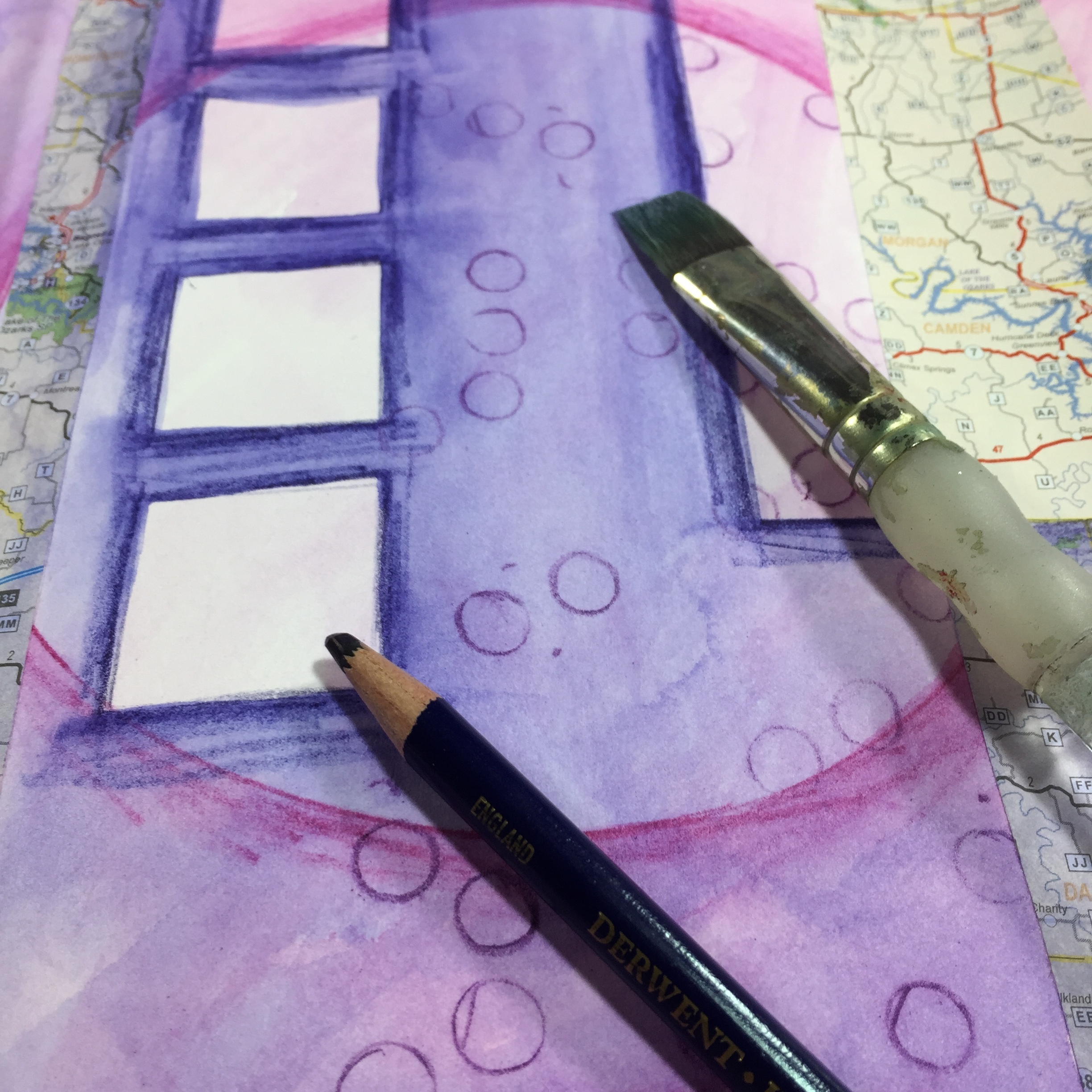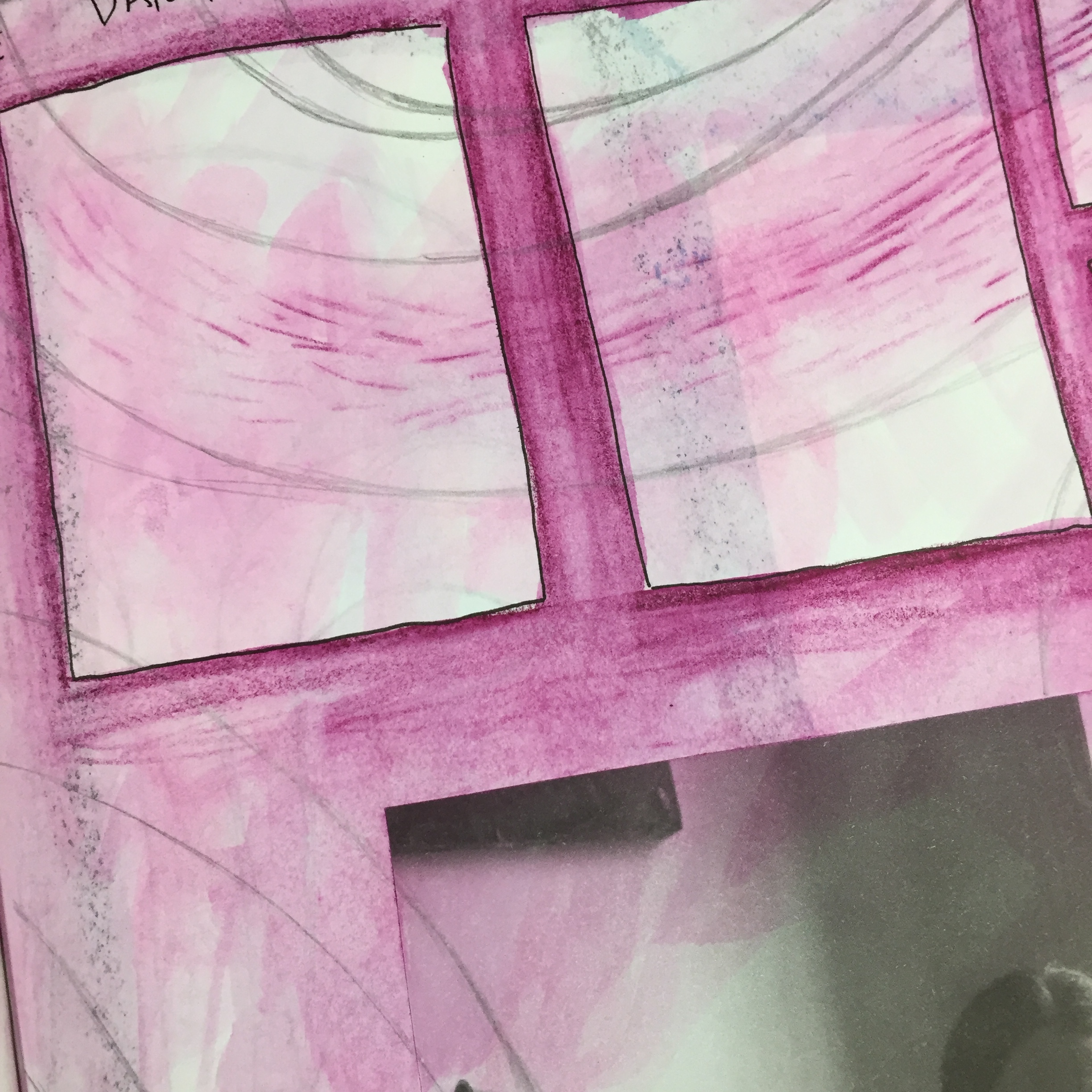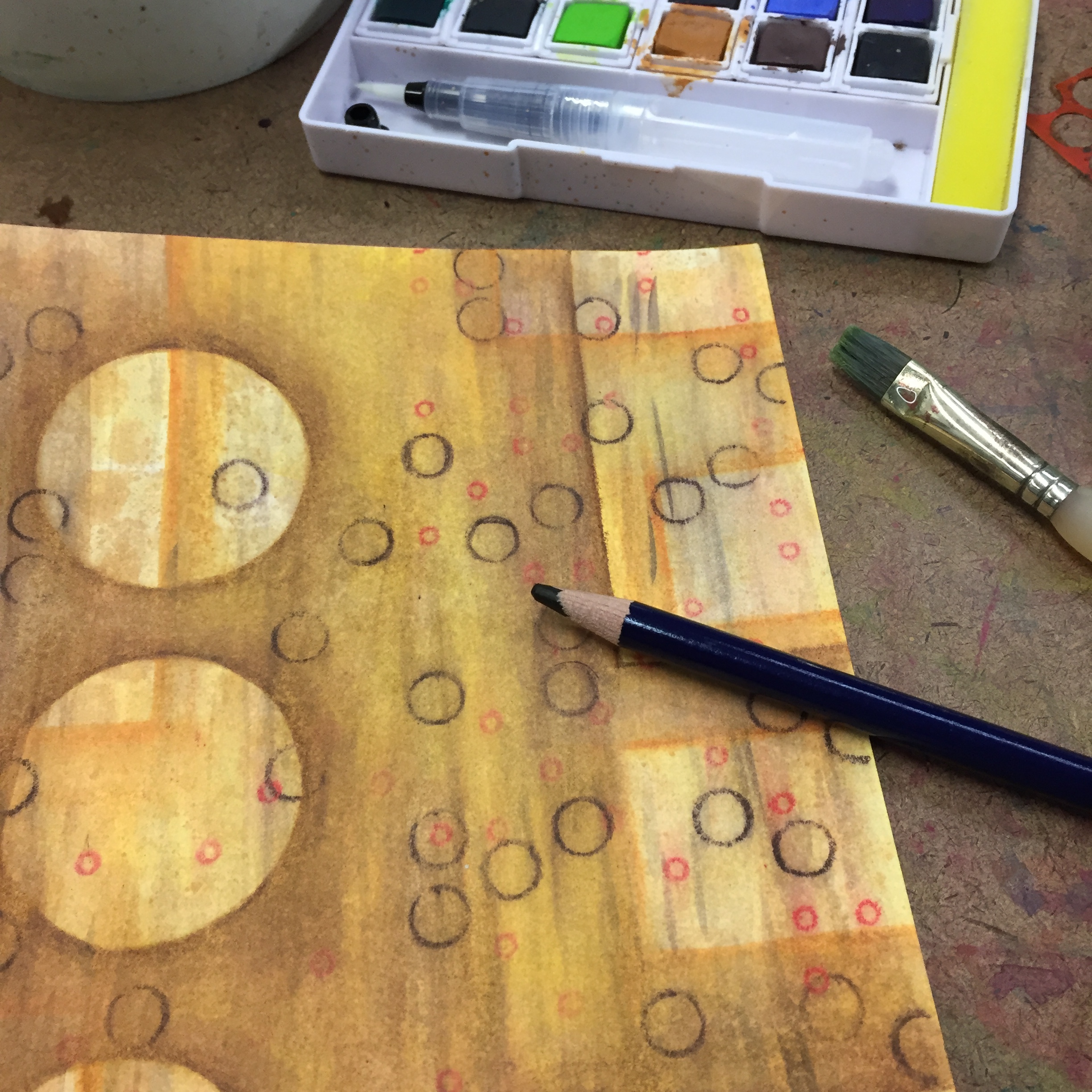I’ve admitted my love of water-soluble pencils on the blog before, especially when I’ve discussed Prismacolor Watercolor Pencils and Faber-Castell Graphite Aquarelle Pencils. I use them a lot in my journal and in my stand alone, mixed media art to create layers. I truly appreciate the control of the pencil, but I love the painterly quality of the water-soluble material. So, today I want to share what is probably my favorite water-soluble pencil — Derwent Inktense Pencils. Although I refer to the Inktense as watercolor pencils, they are not really watercolor, and Derwent has a whole line of watercolor pencils. The Inktense are water-soluble ink pencils, and they are a high quality, professional material.
When someone first offered me an Inktense pencil to try, I didn’t really see any real difference to the Prismacaolor watercolor pencils that I had been using. And in fact, once I got a small set of Inktense pencils, I did a side-by-side test with them and the Prismacolor, and there really wasn’t a discernible difference in color intensity or coverage. Both pencils performed exceptionally well no matter what technique was used. So as far as quality and performance, they were pretty much on par with each other.
So, why did I switch to the Inktense pencils if they didn’t outperform the Prismacolor?
The answer is simply transparency. All of the Inktense pencils are transparent since they are a water-soluble ink. The Prismacolor offer a number of lighter colored pencil, but it appears that they get these pencils by adding white. The white creates a bit of opacity making the color look cloudy when applied, and I’ve never been a big fan of this cloudiness. These colors aren’t so good for layering, but that’s not the case with the Inktense. The only light colors of Inktense are colors that have yellow in them, so you won’t find a light pink or a light blue. Instead you find richer, more intense colors that you can lighten or darken by controlling how much pigment you color and shade onto the paper. This is much better for the type of layering that I like to do with the pencil, so I prefer the Inktense over the Prismacolor.
Another advantage that the Inktense has over the Prismacolor is that you can get a set of 72 in the Inktense, but only a set of 36 in the Prismacolor. There was a time when Prismacolor offered the watercolor pencils in larger sets, but they seem to have cut back on them. If you’re looking for a wide range of colors, Inktense is the way to go.
Now Inktense aren’t perfect, and there can be an issue when using them. The ink becomes fixed when it dries, and you can work over top of it with out disturbing the previous layers. Now this sounds like a major advantage, and it is, most of the time. It’s great for building up layers without smearing and obliterating previous layers, and this permanence also allows the Inktense to be used on silk and fabric, though I’ve never tried this. But the issue is that as you spread the pencil with a wet brush, areas can dry leaving hard-edged lines, which you can’t rewet and fade out. This isn’t all that great if you’re trying to get a smooth, even color. Though it’s an advantage most of the time, this permanence can be a bit of a nuisance in some instances.
The only other issue is price. The Derwent Inktense are a premium material, and so you pay a premium price. They can be quite a bit more expensive than the Prismacolor, but it’s something that I’m willing to pay in order to get the transparency that I want.
If you’re looking for an intense, high quality water-soluble material, you might want to try the Derwent Inktense Pencils, but maybe use one of these 40-50% coupons you can often get for your favorite arts and craft store to help save a bit on the cost.
As a reminder, that I am not being paid or compensated in anyway for these recommendations. These are simply things that I like to use in my own art.







